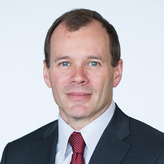March 29, 2023
Fixed Income Commentary

The battle between slowing overall economic activity and stubborn inflation continues to rage in most geographies. Central banks in these regions have increased short rates very sharply over the past year. Generally, the results have been positive as headline inflation has fallen and interest rate sensitive sectors of the economy are in decline. However, the resilience of the economy as a whole has led policymakers to remain active and vigilant.
More hurdles for North American policymakers
Specifically, in Canada, the increase in job creation remains too strong for a meaningful pullback in wage growth. The upward trend in household income has thwarted the Bank of Canada’s efforts to create a sustained downward tilt to core inflation. The Bank has taken overnight rates to 4.5% and has indicated a preference for pausing to assess the lagged impacts of its tightening cycle. The over-levered household sector weighs on the mind of policymakers and is the primary rationale for the difference in rates between Canada and the U.S.
In the U.S., the Federal Reserve is likely to raise rates at least 50bps more in early 2023. Consumption of services, tight labour markets, good capital expenditures and strong rental markets have combined to keep core inflation well above the Federal Reserve’s comfort level. Hence, more hikes to come.
European markets have a long way to go
In Europe, government subsidies have somewhat sheltered the consumer from dramatically higher energy prices to date. Therefore, as price caps are being raised, this will add to headline consumer inflation. The European Central Bank began its hiking cycle much later than its global counterparts and still has at least 100bps more to do in the first half of this year.
In the United Kingdom, a combination of lingering BREXIT issues, low labour supply and the highest level of strike activity in 40 years has greatly reduced the country’s growth potential. Thus, the risk of spiraling wage push inflation is very high in England. The Bank of England has indicated that they are close to a plateau in short-term rates, but the markets have priced in another 75bps-100bps of hikes.
Drastic change on the horizon for Japan
A new governor of the Bank of Japan begins his tenure in April. The BoJ has run an ultra-loose monetary policy for the past 7+ years. Currently, the BoJ caps 10-year yields at 0.5% (after having raised this cap from 0.25% in December 2022). This is called yield curve control and it has become untenable as the BoJ is spending enormous amounts of money to keep 10-year yields below 0.5%. There is a strong expectation that the new governor will end yield curve control, which would bring about major changes in capital flows globally. Foreign pools of capital which have shunned Japanese bonds for years will recalibrate their strategies, and Japanese-based pools of capital will look to repatriate some of their holdings of foreign bonds.
Proceeding with caution
Our portfolios started the year short of benchmark duration and have only recently added purchases of government bonds. Our global fund is still underweight U.K. and European sovereign bonds due to their less attractive real yield profile. This fund increased its overweight position in North American debt, with the fund overall being short of benchmark duration. Our domestic-focused funds have just recently extended duration beyond the benchmark as 10-year yields in the U.S. went above 4% and approached 3.5% in Canada. Our curve positioning has favoured a flattening bias, but our purchases were in the 7- to 10-year sector so our flattening bias is less pronounced.
Our view on credit is somewhat cautious and we are managing this sector more tactically. The technical backdrop is good for credit. Supply and demand dynamics are in equilibrium and are expected to remain so. All-in yields on both investment grade and high yield bonds are at attractive levels on a risk-adjusted basis. Our concern stems from the decline in fundamentals that we expect to build throughout 2023. As economic activity declines, earnings and cash flow generation will weaken, and credit metrics will suffer. Right now, we feel we are being reasonably compensated for this risk, but we intend to sell into any significant spread narrowing. We did exactly this in early January as we trimmed some bonds issued in the financial sector.
Central banks have made progress in reducing headline inflation but remain wary of overall economic health. Substantial interest rate hikes are expected this year in the U.K. and Japan, with moderate rate increases anticipated in the U.S. and Canada. Given the turbulent state of credit, we are employing a more tactical approach for this sector.
About the Author
James joined CI Global Asset Management in 2012 and is an industry veteran with more than 20 years of experience analyzing and managing bonds. James continues to lead the fixed-income components of many of CI’s key mandates, while providing leadership on the asset allocation strategy and oversight to the investment team. James graduated with a Bachelor of Arts in Economics degree from Wilfrid Laurier University and holds the Chartered Financial Analyst (CFA) designation.
IMPORTANT DISCLAIMERS
Commissions, trailing commissions, management fees and expenses all may be associated with mutual fund investments. Please read the prospectus before investing. Mutual funds are not guaranteed, their values change frequently, and past performance may not be repeated
The opinions expressed in the communication are solely those of the author(s) and are not to be used or construed as investment advice or as an endorsement or recommendation of any entity or security discussed. This document is provided as a general source of information and should not be considered personal, legal, accounting, tax or investment advice, or construed as an endorsement or recommendation of any entity or security discussed. Every effort has been made to ensure that the material contained in this document is accurate at the time of publication. Market conditions may change which may impact the information contained in this document. All charts and illustrations in this document are for illustrative purposes only. They are not intended to predict or project investment results. Individuals should seek the advice of professionals, as appropriate, regarding any particular investment. Investors should consult their professional advisors prior to implementing any changes to their investment strategies.
Certain statements in this document are forward-looking. Forward-looking statements (“FLS”) are statements that are predictive in nature, depend upon or refer to future events or conditions, or that include words such as “may,” “will,” “should,” “could,” “expect,” “anticipate,” “intend,” “plan,” “believe,” or “estimate,” or other similar expressions. Statements that look forward in time or include anything other than historical information are subject to risks and uncertainties, and actual results, actions or events could differ materially from those set forth in the FLS. FLS are not guarantees of future performance and are by their nature based on numerous assumptions. Although the FLS contained herein are based upon what CI Global Asset Management and the portfolio manager believe to be reasonable assumptions, neither CI Global Asset Management nor the portfolio manager can assure that actual results will be consistent with these FLS. The reader is cautioned to consider the FLS carefully and not to place undue reliance on FLS. Unless required by applicable law, it is not undertaken, and specifically disclaimed that there is any intention or obligation to update or revise FLS, whether as a result of new information, future events or otherwise.
Certain statements contained in this communication are based in whole or in part on information provided by third parties and CI Global Asset Management has taken reasonable steps to ensure their accuracy. Market conditions may change which may impact the information contained in this document.
CI Global Asset Management is a registered business name of CI Investments Inc. ©CI Investments Inc. 2023. All rights reserved.
